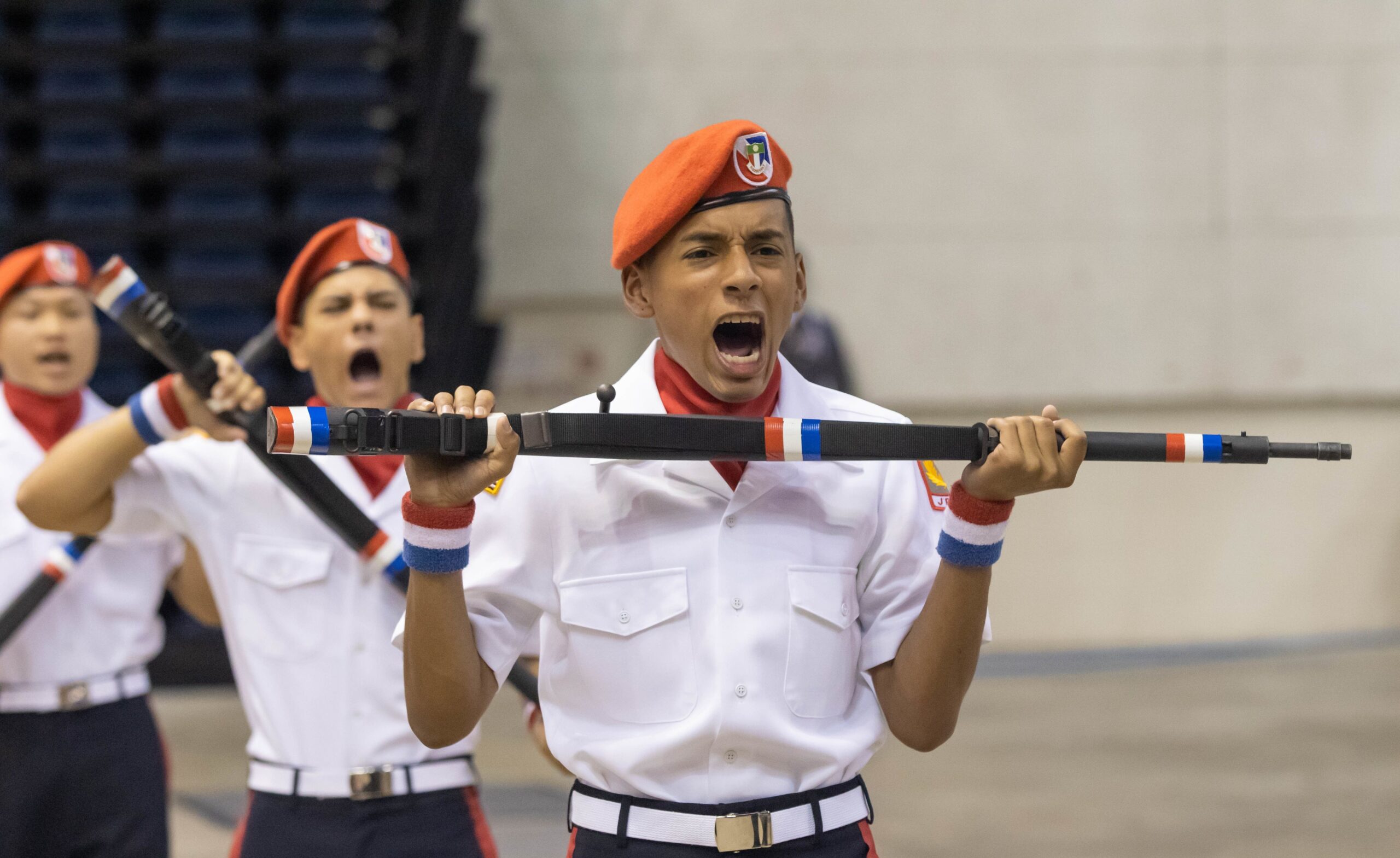The Army’s embattled youth development program at high schools throughout the country has a “mixed” impact on participants’ educational outcomes, according to a report released Friday.
But those who complete four years in it or similar programs run by the military’s other branches have better military career outcomes than those who don’t.
Researchers from the RAND Corporation based their report on three studies: one assessed the impact of Army Junior Reserve Officer Training Corps, or Army JROTC, participation on high school students in Texas and Hawaii, and another examined military career outcomes for soldiers who completed any branch’s program before enlisting in the Army. The third included extensive interviews with program cadre members and other stakeholders.
The Army’s program falls under its cadet command, which employs retired and reserve officers and noncommissioned officers to teach the courses at high schools around the country. According to a December research report prepared for legislators, the service has nearly half, or 1,700, of the nation’s 3,486 JROTC units and 302,500 of its 539,690 cadets. But the programs have come under recent scrutiny after a series of New York Times investigations into allegations of sexual abuse by instructors. While the services insist such incidents are isolated, lawmakers are skeptical.
RELATED
:quality(70)/cloudfront-us-east-1.images.arcpublishing.com/archetype/Z7ZXNMQ4EZFAXDW5CCZYD5IL34.jpg)
The report
Enrollment in Army JROTC is linked to worse educational outcomes for those who drop the program after one year, the researchers found. Texas students who dropped the program after one year were 1.5% less likely to graduate than students of similar racial and economic backgrounds who didn’t participate in the program. Results were inconclusive for students in Hawaii.
Single-year enrollment impacts matter because schools in some major districts around the country automatically enroll first-year students in the programs. In Chicago Public Schools, which recently banned automatic enrollment, cash-strapped principals embraced automatic enrollment policies because the program covers state-required physical education requirements and saves money on traditional gym teachers thanks to the military’s salary subsidies for JROTC instructors.
Students who complete two or four years in the program have lower absence and disciplinary suspension rates, the report said, and cadets who complete four years have higher on-time graduation rates relative to their peers.
Spc. Garrett Nussbaumer, assigned to the 1st Battalion, 214th Aviation Regiment, guides JROTC cadets on the courts at Ansbach Middle High School, Germany, May 2, 2022. (Cpt. Gabrielle Hildebrand/Army)
The researchers also found that Army JROTC participants from Texas are more likely to enlist in the military regardless of how long they participated in the program, though the effect increases in magnitude for those who spent more time as cadets. One-year students enlist at a 7.69% higher rate than their non-JROTC peers, whereas two-year and four-year enrollees sign up at a 13% and 19.8% higher rate respectively.
Once former cadets don the uniform, they find greater success than those who did not complete the program, RAND calculated from Army data. Researchers identified and tracked them by their advanced pay grades: soldiers who completed one or two years of JROTC, regardless of what branch ran the program, can enlist as a private second class, and those who completed three or four years automatically join as a private first class.
Active duty soldiers who completed more than three years of JROTC before enlisting are more than 5% less likely to wash out during their first contract and less likely to face involuntary separation than recruits of similar aptitude, career field and enlistment length who didn’t participate in the program.
Researchers determined that former cadets are slightly more likely to pick tech or science-focused jobs in the Army. The report also highlights “strong evidence” that troops who completed JROTC in high school, regardless of how long they participated, are more likely to stick with the Army long-term than their peers — even when compared only with those who make it through their first enlistment contract.
The report’s authors cautioned that their analysis of military career outcomes isn’t perfect. They couldn’t account for those who later became officers through college-level ROTC programs or the U.S. Military Academy at West Point, and high school students who choose to participate in the program aren’t randomly assigned and may simply be more inherently interested in military service than the general population.
Davis Winkie is a senior reporter covering the Army, specializing in accountability reporting, personnel issues and military justice. He joined Military Times in 2020. Davis studied history at Vanderbilt University and UNC-Chapel Hill, writing a master’s thesis about how the Cold War-era Defense Department influenced Hollywood’s WWII movies.

